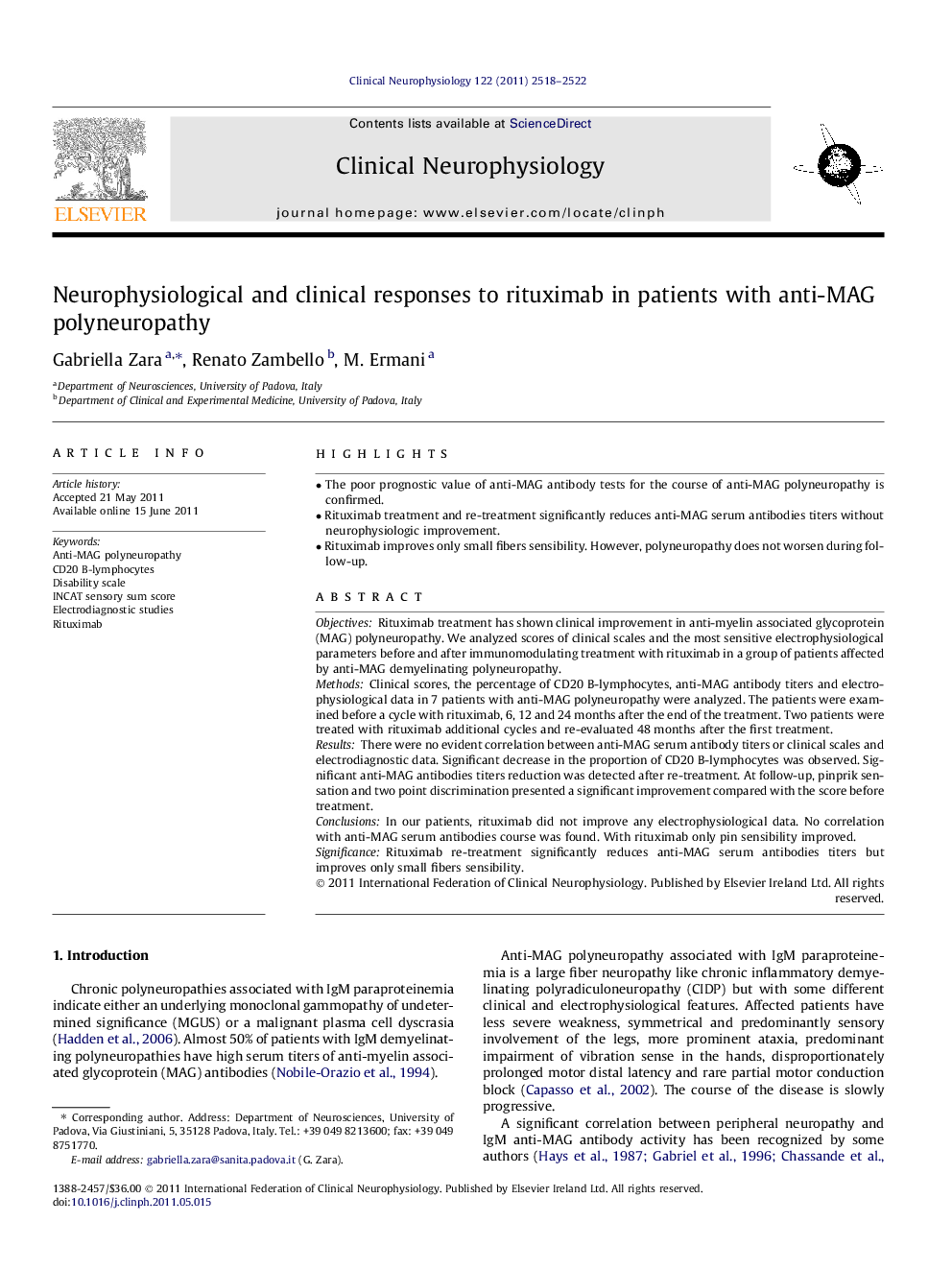| Article ID | Journal | Published Year | Pages | File Type |
|---|---|---|---|---|
| 3043991 | Clinical Neurophysiology | 2011 | 5 Pages |
ObjectivesRituximab treatment has shown clinical improvement in anti-myelin associated glycoprotein (MAG) polyneuropathy. We analyzed scores of clinical scales and the most sensitive electrophysiological parameters before and after immunomodulating treatment with rituximab in a group of patients affected by anti-MAG demyelinating polyneuropathy.MethodsClinical scores, the percentage of CD20 B-lymphocytes, anti-MAG antibody titers and electrophysiological data in 7 patients with anti-MAG polyneuropathy were analyzed. The patients were examined before a cycle with rituximab, 6, 12 and 24 months after the end of the treatment. Two patients were treated with rituximab additional cycles and re-evaluated 48 months after the first treatment.ResultsThere were no evident correlation between anti-MAG serum antibody titers or clinical scales and electrodiagnostic data. Significant decrease in the proportion of CD20 B-lymphocytes was observed. Significant anti-MAG antibodies titers reduction was detected after re-treatment. At follow-up, pinprik sensation and two point discrimination presented a significant improvement compared with the score before treatment.ConclusionsIn our patients, rituximab did not improve any electrophysiological data. No correlation with anti-MAG serum antibodies course was found. With rituximab only pin sensibility improved.SignificanceRituximab re-treatment significantly reduces anti-MAG serum antibodies titers but improves only small fibers sensibility.
► The poor prognostic value of anti-MAG antibody tests for the course of anti-MAG polyneuropathy is confirmed. ► Rituximab treatment and re-treatment significantly reduces anti-MAG serum antibodies titers without neurophysiologic improvement. ► Rituximab improves only small fibers sensibility. However, polyneuropathy does not worsen during follow-up.
